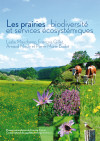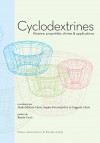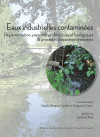
- Summary
-
Long tarnished by a bad image linked to its hallucinogenic effects, and marginalized as a recreational plant because of its association with cannabis, hemp, of the Cannabis sativa Linn variety, has been making a comeback for over two decades worldwide. With the foreseeable shortage of oil and the environmental and energy issues at stake, there is no doubt that the revival of hemp cultivation is part of a vast social and economic recovery plan that could provide solutions to the challenges of our consumer societies. The book describes this annual plant, its age-old and eventful history, and its many agronomic, eco-responsible and economic advantages, all of which are part of the pillars of sustainable development and ecological transition. It also looks at the transformation of plants into high value-added raw materials, their chemical composition and properties. Finally, a special focus is placed on hemp’s many applications, from the most common to the most promising. Each section is illustrated with clear diagrams and key points to remember.
- Contents
-
Avant-propos
Chapitre 1. Les plantes chanvre et cannabis
1.1. Chanvre ou cannabis ?
1.2. La cartographie du chanvre industriel
1.3. Les trois variétés de cannabis
1.4. Les différences entre le chanvre et le cannabis
1.5. Chanvre et cannabis : l’abondance des appellations
1.6. La réglementation
1.6.1. Le chanvre industriel
1.6.2. Le chanvre thérapeutique
1.6.3. Le chanvre récréatif
1.7. Les cannabis en France
Références bibliographiques
Chapitre 2. Le chanvre – Une histoire millénaire
2.1. Les plus anciennes traces connues
2.2. Le chanvre dans la Chine antique
2.3. Le chanvre dans les autres civilisations antiques
2.4. Le chanvre en France au Moyen-Âge et à l’époque moderne
2.5. L’âge d’or du chanvre
2.6. Le déclin du chanvre
2.7. La renaissance du chanvre
2.8. Le chanvre industriel aujourd’hui
2.9. La culture du chanvre industriel en France
Références bibliographiques
Chapitre 3. Les cannabinoïdes
3.1. La famille des cannabinoïdes
3.2. Le cannabidiol ou CBD
3.3. Les produits à base de cannabis légal
3.4. Huile CBD et huile de chanvre
3.5. La législation française sur le CBD
3.6. Les autres cannabinoïdes d’intérêts
Références bibliographiques
Chapitre 4. Le chanvre industriel, la « plante miracle » aux nombreux atouts
4.1. Chanvre industriel, agricole ou textile
4.2. Les atouts agronomiques
4.3. Les atouts écologiques
4.4. Les atouts éco-responsables
4.5. Les atouts économiques
Références bibliographiques
Chapitre 5. Le chanvre – Une source de matières premières renouvelables
5.1. Une plante 100 % valorisable
5.2. Les graines ou chènevis
5.3. Les fibres
5.4. Les copeaux ou chènevotte
5.5. Les poudres ou poussières de chanvre
5.6. Les fleurs et les feuilles de chanvre
5.7. Les racines de chanvre
Références bibliographiques
Chapitre 6. La composition chimique et la structure des fibres de chanvre
6.1. La matière lignocellulosique
6.2. La structure des fibres de chanvre
6.3. Les constituants des fibres de chanvre
6.3.1. La cellulose
6.3.2. Les hémicelluloses
6.3.3. La lignine
6.3.4. Les pectines
6.3.5. Les autres constituants
Références bibliographiques
Chapitre 7. La culture du chanvre – Une multiplication de savoir-faire
7.1. La chaine de valeur du chanvre industriel
7.1.1. La sélection variétale et la production de semences
7.1.2. La production et la récolte du chanvre
7.1.3. Les filières de transformation
7.2. Les difficultés de la culture du chanvre
Références bibliographiques
Chapitre 8. Les marchés du chanvre industriel
8.1. Le secteur de la papeterie
8.2. Le bien-être animal et le paillage
8.3. L’horticulture
8.4. Le secteur du bâtiment
8.5. Le chanvre textile
8.6. Le secteur de la plasturgie et des matériaux composites
8.7. Le chanvre dans l’alimentation
8.7.1. L’alimentation humaine
8.7.2. Le domaine de la neutraceutique
8.7.3. L’industrie des boissons
8.7.4. L’alimentation animale
8.8. La cosmétologie et l’hygiène
8.9. Le chanvre thérapeutique
8.10. La production d’énergie
8.11. Les nouveaux horizons pour le chanvre industriel
8.11.1. L’agrochimie
8.11.2. Le chanvre, un agent dépolluant naturel
8.11.3. Le chanvre pour décontaminer des eaux polluées
8.11.4. Les autres applications potentielles
Références bibliographiques
Chapitre 9. Le chanvre industriel : La plante du futur ?
Références bibliographiques
Abréviations
Lexique
Récapitulatif de quelques dates importantes
- Author (s)
-
Chiara MONGIOVÍChiara Mongioví holds a PhD from the University of Franche-Comté (2023) under the supervision of Gregorio Crini and a Master's degree in Chemical Sciences (2019) from the Università degli Studi di Bari Aldo Moro, Italy. Her thesis project focused on the use of lignocellulosic fibers for wastewater treatment.Grégorio CRINIGrégorio Crini is a researcher at the University of Franche-Comté. He holds a PhD in organic and macromolecular chemistry from the University of Lille (1995) and a habilitation to direct research from the University of Franche-Comté (2000), and heads a research group on water chemistry and engineering. His activities focus on the use of macromolecular architectures based on natural substances (starch, chitosan, cyclodextrins, celluloses, wood, hemp, flax) in bioprocesses (biocoagulation, bioflocculation, bioadsorption, biodegradation) to complex environmental contaminants (metals, dyes, organics, fluorides, emerging pollutants). He is author or co-author of over 270 publications, 18 books and one patent (number of citations > 20,000, h-factor 49). He is coordinator of several research projects and contracts, and consultant to several companies on environmental issues. He is ranked in the top 2% of the world's most influential researchers by Stanford University in 867th position out of a list of 210,199 researchers (2023 ranking).
- Readership
-
This book will be of interest to any reader - student, young researcher, senior scientist or industrialist - looking for quick access to information and potential applications for hemp.
- Online












